#Egyptian Book of the Dead (Quote)
Text

"I am the dream changing before your eyes. I am my body, a house for blood and breath. I am a man on earth and a god in heaven. While I travel the deserts in frail form, while I grow old and weep and die, I live always as a child inside the body of truth, a blue egg that rocks in the storm but never breaks. I sleep in peace in my mother’s lap, a child mesmerised by sunlight on the river. My soul is swallowed up by God.
Out of chaos came the light.
Out of the will came life."
~ 'The Egyptian Book of the Dead'
[Thanks Ian Sanders]
82 notes
·
View notes
Text
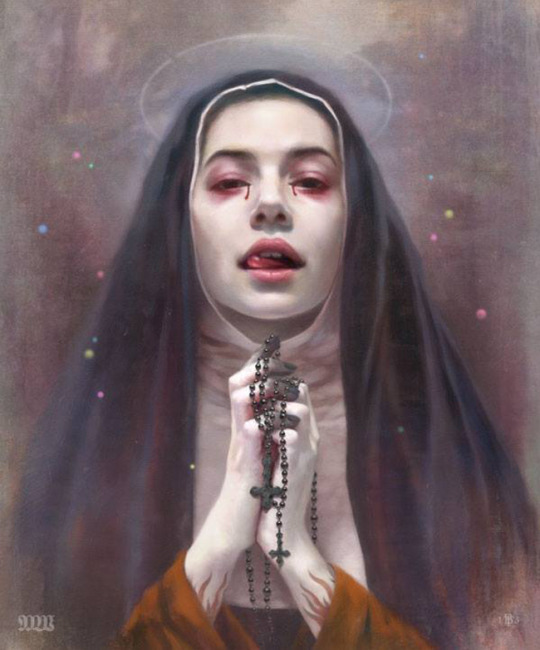
"Mine is a heart of carnelian, crimson as murder on a holy day."
- from Awakening Osiris: The Egyptian Book of the Dead (trans. Normandi Ellis)
Art by Tom Bagshaw
#literature#quote#reading#writing#book#books#awakening osiris#osiris#the egyptian book of the dead#egyptian#book of the dead#translation#normandi ellis#art#digital art#tom bagshaw#heart#carnelian#crimson#murder#holy day#holy
14 notes
·
View notes
Text
Reincarnation...Oneness...Know Thyself...
I am Yesterday, Today, and Tomorrow, and I have the power to be born a second time; I am the divine hidden Soul who createth the gods…Hail, lord of the shrine which standeth in the middle of the Earth. He is I, and I am he… ~ Egyptian Book of the Dead (Chapter LXIV, Papyrus of Nebseni…Chapter of Coming Forth by Day in the…

View On WordPress
#Afterlife (Quotes)#Ancient Egypt#Ancient Egyptian Proverbs#Chance Gardner of Magical Egypt#Death (Quotes)#Egyptian Book of the Dead (Quote)#God#God (Quote)#God Head (Quotes)#Godseeds (Quote)#Know Thyself (Quotes)#Knowledge (Quotes)#Kundalini#Kundalini (Quotes)#Life Quotes#Near Death Experience (Quotes)#Out of Body Experience (Quote)#Reality (Quotes)#Reincarnation#Reincarnation (Quotes)#Remember Thyself (Quotes)#Remembrance (Quotes)#Self-Realization#Self-Realization (Quotes)#Soul (Quotes)#Spirit (Quotes)#the Self#The Wisdom of the Egyptians#Third Eye#Third Eye (Quotes)
8 notes
·
View notes
Text
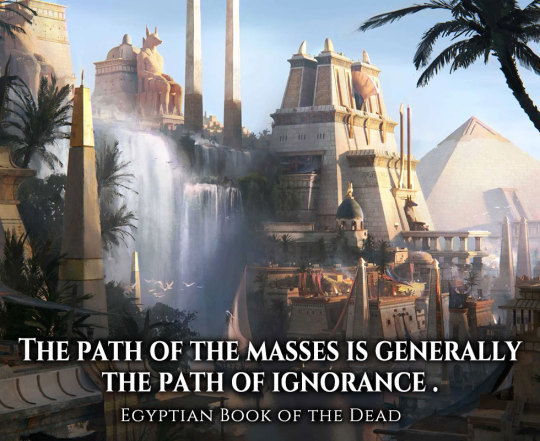
The Path of the masses is generally the path of Ignorance.
-Egyptian Book of the Dead-
👁👁👁⛰⛰⛰
#anime#ufos#aliens#scifi#extraterrestrials#animation#ancient aliens#comic books#fantasy#manga#egyptian book of the dead#egypt#quote
7 notes
·
View notes
Text
Air and earth are my horizons. What lies between is what I am.
Normandi Ellis, Awakening Osiris
#quote#the Egyptian book of the dead#awakening Osiris#Normandi Ellis#kemetic#kemetic paganism#paganism#polytheism
9 notes
·
View notes
Text
"All things are possible. Who you are is limited to who you think you are." -Muata Ashby, Egyptian Book of the Dead
#egyptian proverb#muata ashby#life motto#good quotes#spirituality#inspirational#writing inspo#egyptian book of the dead
12 notes
·
View notes
Note
I’m with Charlie on this. Wodehouse’s books are great, especially the Jeeves ones! I know I’ve seen him mention Graham Greene too, who I also love. As with everything else, Charlie had good taste in books! (To be fair I don’t really think it’s possible to have bad taste in books. Just read what you like.)
Charlie definitely had interesting taste in literature. Wodehouse (I knew I misspelled that when I was transcribing and I was too lazy to check) and Graham Greene, like you mention, but he was also really into poetry. Off the top of my head I can recall him mentioning Dylan Thomas and Auden, I know there were some others as well. He was hugely fond of mid-century/old school noir detective thrillers, too.
The most surprising one is definitely still this (from the same interview/article):
“He is an expert on Georgian silver, the American Civil War, Nelson memorabilia, rare books, antique firearms, 18th-century erotic literature and jazz photographs.”
I mean, I know Keith loves 18th century and Napoleonic era naval literature (bless a man who doesn’t fall asleep at the endless descriptions of ship rigging in a Patrick O’Brian novel), but that one is leagues more out of left field. Especially because the first thing that comes to mind in that genre is the Marquis de Sade.
#not going to lie#I do believe in bad taste in books#but I generally try to keep my thoughts on that to myself#I will say that any reading is better than none#and I’ve read my fair share of crap for a variety of reasons#(there will always be a vengefully angry little 13 year old girl inside of me. that’s so mad about being forced to spend any time reading#bad YA novels about princesses and first boyfriends. when all I wanted was to read Nabokov and Bellow and a translation of the Egyptian Book#of the Dead. I was an odd and off putting child)#the rolling stones#charlie watts#old married band#quote#ask response#anonynous
2 notes
·
View notes
Text
Daily Hieroglyphics Translation #4
A quick translation for today, from a quote that was my wallpaper for all of 6th grade.

4 notes
·
View notes
Text
Werewolf Fact #69 (dude!) - Ancient Egypt
Well, I thought this month would be about something else, but my patrons spoke differently! And I always listen to my patrons when it comes to folklore facts.
So, without further ado, let’s finally get back to werewolf facts! This is a big one, as it’s a lifelong favorite topic of mine!
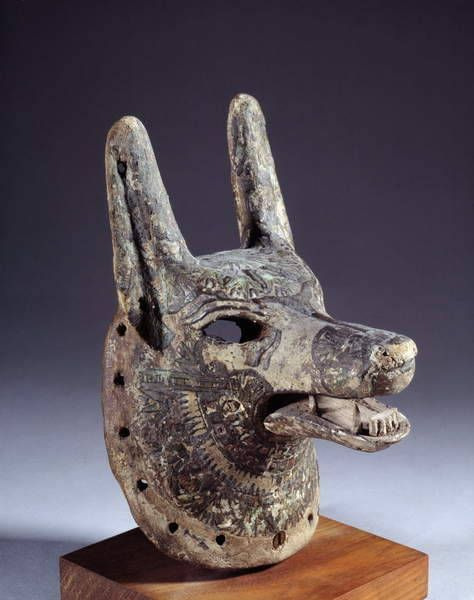
An ancient Egyptian mask worn by a priest during rites performed for the dead, who would have “taken on the aspect” of the wolf-headed god Anubis
Let me just open by saying that I absolutely love ancient Egypt. It’s fascinated me since I was a small child and I was reading a tiny children’s book about cats, and ancient Egypt was discussed. Naturally, when I found out about Anubis, I was even more interested. Then came games like Age of Mythology and many movies... especially The Mummy (1999), of course. Anyway!
Ancient Egypt didn’t have a negative opinion of wolves. In fact, several important deities had wolf heads and were associated with wolves. Let’s begin with something that’s always interested me, which is the city of Lykopolis (as it was called in Greek)...
More under the cut, since this post got so lengthy!
Lykopolis (ancient Egyptian transliteration is something like “Zawty”) was an important city located on the western bank of the Nile, capital of the Thirteenth Nome of Upper Egypt during about 3100 BC. The primary deities of the city were - as you might imagine - Anubis and Wepwawet, both wolf-headed gods. Mummified wolves (golden wolves, not jackals; more on this momentarily) have been found in various excavated chambers throughout the city ruins, of which very little still survives.
The city has a very fun story behind it, as told by Greek historian Diodorus Siculus. In the first century BC, an army of Nubians invaded from the south - but they were repelled by packs of wolves. These wolves drove the army from the southern borders of Lykopolis and then back beyond the borders of Egypt. According to Diodorus, this is why Lykopolis was called “the city of the wolf” and revered wolves and wolf-deities so greatly.
Some sources claim that these wolves were summoned by the god Osiris, who was also worshiped as a wolf in Lykopolis, and had also, at one point, taken the form of a wolf. I will admit I personally haven’t read this source, as it’s in French, so I can’t fully attest to that element of the story - I haven’t seen that one cited very often in various specifically ancient Egypt history sources. Regardless, it’s fun if true. Either way, the tale of the wolves driving back Egypt’s enemies was definitely recounted in detail in a primary historical source!
By the way, you’ll hear a lot of people refer to these deities as “jackal-headed.” It’s very popular still to call Anubis the “jackal god.” We now know, though, that the animals in question were in fact not jackals - they were indeed wolves. Scientists for a long time asserted that they for some reason knew things better than the ancient Egyptians and Greeks who actually lived during the time period and retroactively dictated that they weren’t wolf gods, they were jackal gods.
However, the Egyptian jackal was discovered to be a species of gray wolf. You can read a lot about that here in this article, regarding how people didn’t believe wolves lived in the area during those time periods, but we found out they did, and we also found out that the mummified wolves in Lykopolis were - yes - wolves, like their contemporary cultures said.
A quote from the article: “the Egyptian jackal is in fact a gray wolf. ‘We now know that wolves were indeed in Africa in the days of the ancient Egyptians—and long, long before,’ says Stenseth.”
I honestly don’t know why everyone thought wolves couldn’t have lived in the area during these time periods (when we know perfectly well a wide variety of animals inhabited regions they no longer inhabit, and that we discover new species in the deserts even to this day) or decided the ancients didn’t know what they were talking about, but anyway...
Another fun fact, by the way, is that the word “jackal” didn’t even enter the English language until the 1600s, borrowed from French, which in turn was most likely borrowed from Persian - not Egyptian. The animals in Egypt were wolves, and we now know that they were also wolves scientifically. In fact, some scientists even believe it’s possible that jackals (as in actual scientific jackals, not golden wolves) didn’t find their way into the Egyptian region until much later, when these wolf gods would have been well-established. They may have followed travelers out of Arabia. This is speculation, though, but regardless, the long-believed-to-be “jackals” of ancient Egypt were all wolves. So it sounds like we should’ve believed the ancient Egyptians and Greeks in the first place, huh?
Long story short - Lykopolis was indeed a wolf city, wolves drove invaders out of Egypt, and Anubis, Wepwawet, and Duamutef were wolf gods. Not jackals.
Please note that there are those who would argue with me that some of them are jackals and some are wolves, or that they were all jackals, or whatever else, but in my personal opinion (and the opinion of many historians and scientists), it’s very clear across depictions, mummified wolves, historical accounts from both Egyptians and Greeks, etc., that these many Egyptian wolf-related beings were what we now call “golden wolves” or “Egyptian wolves” (and sometimes referred to as “jackals” still despite their genetics), which are indeed gray wolves, and not a species of true (genetic) jackals. There also exist theories that these wolves are something that no longer exists, and also that the modern animals we have are interbred wolves and jackals. Theories abound, whatever the case.
Then of course there are those who say that Anubis was the jackal-headed god and Wepwawet was the wolf-headed god, due in no small part to inherent biases that wolves only come in “gray.” I think those are all very silly, especially as we already know that colors in ancient Egypt were highly associated with ritual and meaning, rather than directly stating that Anubis’s head was black because he’s some kind of black-backed jackal - which don’t even have black heads, anyway. We have multiple associations between Anubis and wolves, and just because Wepwawet was often depicted with a grey or white head doesn’t make him a wolf and Anubis something different. Therefore, I personally will continue to refer to all of these as wolf-headed gods, and I apologize if that bothers anyone.
Sorry. Brief Mav-rant there. More important things to follow, because we haven’t even talked about those deities yet!
So now let’s talk about these gods themselves...
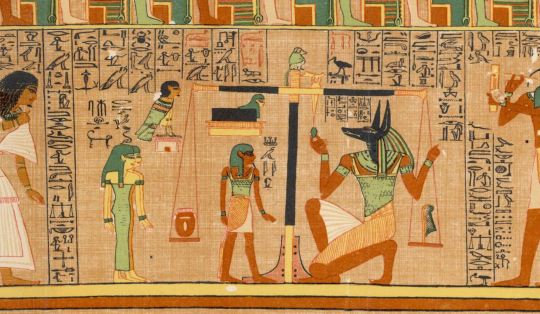
Anubis in the book of the dead (which was not actually a book)
Easily my favorite thing in all of ancient Egyptian mythology, Anubis (known by many other epithets, including but not at all limited to "Lord of the Sacred Land," "He Who is Upon his Sacred Mountain," "Master of Secrets," and "He Who is in the Place of Embalming”) is the god of the dead. He was the protector of graves, guardian of the dead, the shepherd of souls passing into the afterlife, and many more roles, including the ever-important Weighing of the Heart (as seen above), the results of which would dictate whether or not someone was allowed to enter the afterlife - or if their heart was devoured by the monster Ammit and their soul destroyed forever.
Anubis was depicted with the black head of a wolf. His head was colored black because black was the color associated with life, the life-giving soil of the Nile River, regeneration, and embalmed bodies, and he, of course, is also the god of mummification. Anubis is one of the single most important deities in all of ancient Egypt, depicted and mentioned very frequently, even more than most any other deity - however, despite this, there are almost no stories actually involving him.
But no, Anubis was not “evil,” as much of modern pop culture would have you believe! (Sorry The Mummy Returns, I love you to death, I really do - but it was super rude to make Anubis evil.)
Long story short, Anubis was freaking awesome, and there’s way too much to say about him and his awesomeness for just one post. Maybe I’ll do a separate post all about him later, because he’s a personal obsession of mine.
Anubis’s brother (at least, he is considered to be this by some) was the god Wepwawet, another wolf-headed deity. Wepwawet was a man with a white or grey head of a wolf (though some think he may have also had a black head like Anubis, but others claim that is not the cause and the coloring was on purpose as we have seen it in too many different places - still more claim it was just the artist’s preference; it’s hard to know any of these things for sure)...
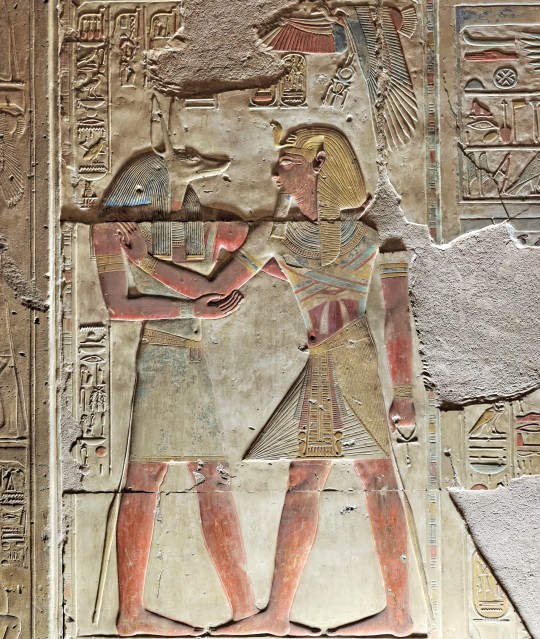
Wepwawet with Pharaoh Seti I (try not to read that in Ardeth Bay’s voice, I dare you. I don’t know why you wouldn’t want to, though)
Like basically all deities of ancient Egypt, Wepwawet is a complicated god, a deity involved in some funerary rites, but especially associated with war and royalty. Wepwawet means “opener of the ways,” and he was depicted as a man with the head of a grey or white wolf, as well as wolf at the prow of a solar boat, sometimes said to lead armies, to scout, and even to have the honor of going before the pharaoh himself. He is also known by the title “one with sharp arrows more powerful than the gods.”
A very important god, Wepwawet is one of the oldest gods of Egypt ever recorded, and he was always associated directly with royalty and specially the pharaoh. He was said to accompany the pharaoh on his hunts, as well as protecting the pharaoh in life and the afterlife - he is a symbol of divinity of rule and of kings in general. He is, for certain, a very good deity, rather than some kind of evil wolf of Western literature.
And lastly among the prominent wolf-headed deities, we have one of the four sons of Horus, Duamutef...
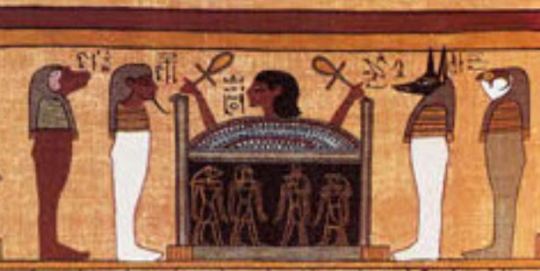
The four sons of Horus were depicted upon the canopic jars (jars containing certain organs of the mummified dead) starting in the First Intermediate Period of Egyptian history, which was around 2181-2055 BC. Each deity protected a different important organ; Duamutef, the wolf-headed god, always protected the stomach and represented the direction of the east. Please note he was not always depicted with a black head like Anubis; sometimes he also had a white or grey head. It varied. Likewise, in later periods, the forms of these various gods were sometimes mixed up, and a different son of Horus would have the wolf head. These deities were depicted not only on the canopic jars, but also on many other funerary artifacts, including the sarcophagi that would contain the jars.
So we have all these wolf-headed deities... but does any of this tie into werewolves at all?
Well, it doesn’t, really. There seems to be no indication that Anubis, Wepwawet, Duamutef, or anyone else did any particular shapeshifting, and they certainly weren’t cursed. They were gods. Anubis and Wepwawet are both sometimes depicted as simply a wolf as opposed to a wolf-headed man - as many of the Egyptian gods are depicted as their animal counterparts, including Ra, Horus, Hathor, Sobek, and many, many others - but that’s merely his animal aspect counterpart. Depictions and aspects of the gods of ancient Egypt (and also, later, how Rome and Egypt intermingled some of their deities during the Roman occupation, such as Hermanubis) are extremely in-depth topics. I’ve always loved studying them, but they are immensely complicated - certainly far too complicated for this post! So let’s get back to the matter at hand...
I’ll be honest, I have yet to find a credibly-sourced legend that talks about anything like an ancient Egyptian “werewolf.” I’m pretty darn sure they didn’t have anything remotely like what we consider among actual werewolf legends, my friends, and especially none that meet my personal criteria. The ancient Greeks, however, absolutely did, as you probably know if you’ve spent time browsing my werewolf facts masterlist (link at the bottom of this post!).
Wolf-headed gods, however - yes, they definitely had those, and no, they were not “evil gods.” In fact, some of them were very highly revered and associated directly with necessary aspects of life and death, as well as with pharaohs.
Speaking of, if you love ancient Egypt (and also adventure movies), you should absolutely check out my new novella that came out just this past June - Wulfgard: The Tomb of Ankhu!
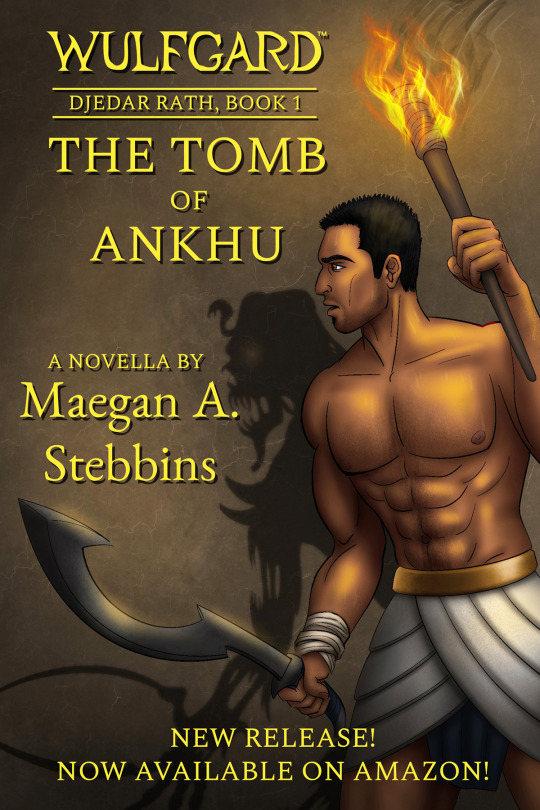
It is the first of two short novellas that tell an exciting tale about adventure, an ancient curse, mummies, memorable characters, and last but not least lots of Anubis and other legends, all of it set in the vast ancient-medieval dark age fantasy realm of Wulfgard: a world where all myths are true.
Every book release means the world to me, and this one is no different. I’m very proud of this story, and I really think you’ll enjoy it.
Deep in the southernmost deserts of Wulfgard lies the resting place of Pharaoh Ankhu the Endless, one of the greatest evils the land of Kemhet, or the world, has ever known. So terrible was his power that the gods themselves cursed him, sealing him away in an underground labyrinth. Ankhu rises with each darkening of the moon, a walking mummy, wandering this tomb in search of his own still-beating heart, without which he can never reach the afterlife.
Over untold ages, Ankhu’s tomb remained undiscovered, a secret protected always by the loyal Medjai, an order sworn to guard Kemhet from all threats. And now, a new threat has arisen: Lord Tefnahkt the Red, a powerful warlock, drives his cult and his many slaves to uncover Pharaoh Ankhu’s resting place and steal the mummy's power.
While a small group of Medjai desperately work to stop Tefnahkt’s plans, one slave may become the key to putting an end to this evil once and for all: Djedar Rath. In a race against time, Djedar must lead the Medjai to prevent Tefnahkt from opening the tomb of Ankhu before the coming of the new moon, when the undead Pharaoh will awaken once more. For, if Ankhu escapes, the world will never survive his wrath.
Inspired heavily by real-world ancient Egyptian and other mythologies - but with many original additions and elements - as well as the classic character-driven adventure genre that mixes aspects of action, thriller, and horror, with a tasteful sprinkling of levity, The Tomb of Ankhu is a tale of non-stop adventure and excitement that will leave you on the edge of your seat! Now available in ebook and paperback!
Go here to purchase on Amazon! https://www.amazon.com/dp/B0C8897R1K
Readers have been really enjoying this one! The second one has been in the works for quite some time already, so expect news about that in the coming months, as well.
Hope you enjoyed the werewolf fact this month, even if it was kind of more a wolf fact. But, myself, I have spent my entire life captivated by ancient Egypt, so I love this kind of stuff.
Thanks for reading, and until next time!
( If you like my werewolf blog, be sure to follow me here and check out my other stuff! Please consider supporting me on Patreon or donating on Ko-fi if you’d like to see me continue my works, including my folklore blog and writing my own novels, werewolf and otherwise. Every little bit helps so much.
Patreon — Personal Website (new and improved! Great starting point!) — Ko-fi — Wulfgard — Werewolf Fact Masterlist — Twitter — Vampire Fact Masterlist )
#werewolf#werewolves#werewolf fact#werewolf wednesday#werewolfwednesday#werewolf facts#folklore#folklore facts#mythology#mythology facts#ancient egypt#egypt#egyptian#ancient egyptian#anubis#wepwawet#wolf gods#wolf mythology#wolves#wolf#legend#legends#ancient world#osiris#ancient egyptian gods#egyptian gods#long post#research#lykos#jackal
77 notes
·
View notes
Text
tdp and mythic inspiration electric boogaloo
The Ancient Egyptian and Greek myth edition, brought to you by a lifelong interest in researching Greek myth, the wonders of the internet, and one of my best friends who almost majored in Classics / had a very long Egyptian mythology phase and verified my leanings (and offered up some new ones).

Previous myth metas:
The Fall of Lux Aurea as the Siege of Troy
Rayllum as Orpheus and Eurydice
Deceptive Gift Giving In Greek Mythology and TDP
Aaravos’ Mythic Associations (re: Lucifer and Prometheus)
General thoughts under mythology tag for those interested
Bonus meta about the dark magic sigil being based off Hermes’ caduceus here written by @kradogsrats (and also talks a little bit about Thoth / some of what the above metas touched on as well). With all this out of the way, let’s get into it.
The Trio + Aaravos
Now I have talked briefly about this before as the parallels were actually brought to my attention by another user, @corcracrow in an ask and following meta here. I’d suggest reading that first as we’ll be covering similar territory here but also building upon the parallels between Callum, Aaravos, and Rayla with Thoth, Osiris, and Ma’at in more detail as well as discussing some other deity similarities (Isis, Ra, and Ezran at the behest of my friend).
AARAVOS AND OSIRIS
Even before S4 came out I’d associated Aaravos with Osiris due to the shared duality in their natures, with Osiris being a god of many things, including but not limited to fertility, the embodiment of the dead, resurrected king as well as a general god of the underworld, sometimes known as “The Lord of Silence.” My myth loving friend who also has Aaravos as their favourite TDP character, also heartily agreed that Aaravos-Osiris is where they would place our starry elf when it came to similarities in the Egyptian mythic tradition.
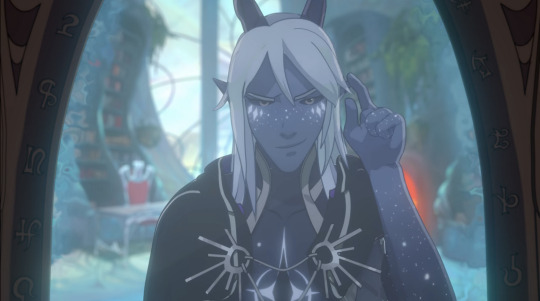
One of the most famous, if not the most famous, myths concerning Osiris is his death and resurrection. He is chopped into pieces after being betrayed by his brother, Set, and his sister-wife, Isis, has to piece him back together. (Being chopped into pieces is also a commonality for his usurper, Set, as well as for the Grecian primordial deity of Space, Uranus, and his son, the Titan of Time, Kronos. Somebody needs to start taking away sickles.)
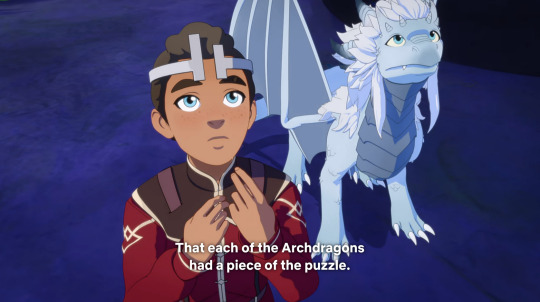
This connection is also inspired by depictions of Thoth (Callum) presenting Osiris (Aaravos) a Key of Life vaguely reminiscent of his 4x04 intro pose, but more on the Key of Life / Aaravos later.


CALLUM AS THOTH
So why Callum as Thoth? Well, Thoth was the Egyptian god of scribes, magic, master of knowledge, and known as the Divine Author of All Books. This fits not only with Callum’s key characters being linked to his curiosity and cleverness, and the infamous “Destiny is a book you write yourself” (which was also the promo quote for the series before S1 released) but also fits the other gods my recommended I look into / confirmed my suspicions about. Thoth often helps Isis (Ezran) in resurrecting Osiris and is married to Ma’at (Rayla) but more on that later as well.
Last but not least, Thoth’s Egyptian name was Djehuty, which means “He who is like the Ibis.”

He often provides counsel to others and indeed gambled with the Moon to earn the extra five days of the calendar, resulting in the birth of Nut’s many children, and the year having a full 365 days. We can see holdovers in this in terms of Callum’s cleverness, ability to plan, and the way he is often unafraid to take even momentous risks.
RAYLA AS MA’AT
Ma’at had a double meaning to the Egyptians, referring to both a goddess who personified many concepts, and the concepts of Truth, Justice, Morality, and Balance. Good Pharaohs were ones who upheld ma’at in their royal proceedings and decisions. We can see tenets of this in both modern day ideas of Lady Liberty / Justice and of in-universe Lady Justice that Harrow speaks of in S2. Ma’at is also traditionally Thoth’s wife and shares a similar to connection to Ra that Thoth does, but we’ll talk more about that when we get to Ezran.
However, the main reason I aligned Rayla with Ma’at is, along with her conceptual associations, Ma’at was involved in the Afterlife’s most important ceremony: the weighing the newly dead mortal’s heart against her Feather of Truth. Which, while Phoe-Phoe’s feather is initially bound to Ezran, it is intrinsically linked to Rayla in all other instances.


Truthfulness, justice, and morality are also by and large the concepts that define her arc and her various struggles over the past four seasons, so the fact that out of all gods and goddesses, Ma’at also shares a kinship with Ra (Ezran) and wifehood to Thoth was just a perfect cherry on top and honestly, probably the most fun sheer coincidence of it all, if I had to guess.
Ezran as Ra and Isis
So originally I wasn’t thinking too much of Ez having a counterpart due to the fact I’m only passably familiar with Egyptian myth / I always like to make sure my tracing is strong and I’m not stretching things beyond measure. Then my friend recommended I take a look at Isis and Ra for Ezran, so here they are. Isis was definitely not my first thought since she is primarily a mother-wife goddess and associated more with the female adjacent spectrum of divinity; however, my friend pointed out the importance of Isis as a symbol of the throne, which she also wears on her head, as well as her place as a magical healer and magician next to Thoth.
This would be particularly worthwhile, if, as speculated, Ezran plays a role in reviving Runaan in particular out of the coin due to the binding the assassin still wears for his long living target.
This fits Ezran’s ascension to kingship most clearly, as it is his most significant role, as well as his attempts to heal the world from the throne itself, and themes of rebirth in his arc as king; cast out to the underworld (prison) only to reclaim it even without a crown, as Isis is not just a helper to the king, but a Goddess of Kingship. Additionally, Isis often seeks counsel from Thoth, the same way that Ezran leads on Callum, and Ezran’s connection with animals has been widely speculated to fit into something magically in-universe, although we are still waiting on confirmation.
Then you have Ezran as Ra, which also solidifies the Callum-Ezran-Rayla trio as a neat little parallel to Thoth-Ra-Isis. As the god of the sun, Ra was one of the most important and widespread Egyptian gods, Ra ruled in all parts of the created world: the sky, the earth, and the underworld. He was the god of the sun, order, kings, and the sky, and also most heavily associated with rebirth. He would go to the Underworld for the duration of night (thus causing night time) for twelve hours on a boat, with Ma’at at the front of his solar barque, and Thoth also at his side. (It is also a fun, tiny connection of Ez’s best friend, Bait, being connected to the Sun primal.)

But I think that’s probably enough conspiracy string wrangling for now in terms of assigning roles and similarities between characters. Now I want to get to the real heart of the meta which is something I’ve thought for a while now (I want to say shortly post S3, but honestly could have been any time during the very long hiatus) which is to say
The Ankh

the Star arcanum symbol has always reminded me of the Ankh. A symbol of Eternal Life, the Ankh is one of the oldest icons in the world, representing Eternal Life and the first known Cross symbol, believed to have eventually turned into the Christian cross symbol over time and due to simplification. Known as the Key of Life, the Ankh is associated with many Egyptian deities including ones we have mentioned above as a symbol of power and creation, and is the Key of Life is what is being presented by Thoth to Osiris in the artwork pictured above.
However, wait: there’s more.
The Ankh is associated the Nile, the largest and most important body of water in Ancient Egyptian mythos. It can also be associated with air and the very common idea of Breath of Life when it comes to creation and revival, particularly of pharaohs upon death (which would fit with Aaravos promising to revive Viren, a dead king, after mummifying / preserving his body for two years). Now, this makes sense, as breath and water are crucial for well, being alive, particularly in a culture surrounded by a vast desert. However, the Nile could also have negative implications with destruction and thus had a continual rebirth motif, with boats as crucial mode of transportation both in literal life and to the afterlife. (Which is interesting, don’t you think, considering next season is going to be Book Five: Ocean.)
But wait: THERE’S. MORE.
The Ankh was also associated and used to refer to mirrors, specifically ones shaped like an oval rather than a perfectly round circle.

Ovular mirrors represented the cycle of life, death, and rebirth, fitting with Osiris. They would be offered to Hathor, the goddess of Love (and beauty / fertility, dance, etc.) as well. “The association of the ankh with the mirror was no chance occurrence. The Egyptians believed that the afterlife was a mirror image of life on earth and mirrors were thought to contain magical properties” (citation). Additionally on top of it all, mirrors were closely associated with divination.
But wait. There’s still. MORE. Specifically:
The (Quasar) Diamonds
In ancient Egypt, diamonds were a symbol of courage, power, and truth. They also represented the sun. In Greek and Roman mythology, diamonds were believed to be the tears of the gods or splinters that had broken off from falling stars. For the Romans, they additionally believed as early as the 1st century CE that Cupid’s arrows were diamond-tipped as well.


The pharaohs placed diamonds as a centrepiece in the ankh.


All of this to say I am slowly but surely being convinced the Key of Aaravos has a connection to both Aaravos’ mirror prison, but also the Quasar Diamond perhaps taken from his missing Star arcanum symbol that caused him to be a Fallen Star in the first place - that perhaps the key holds the quasar diamond within it as a hiding place in plain sight, and this is why it is needed to unlock his prison.
Conclusion
I hope you have enjoyed this mythic deep dive, possibly learned something new / was delighted to see something you remember from your myth phase, or at the very least, enjoyed seeing me gradually lose my mind over the duration of this meta. As always, mythic comparisons are fun and can often be fruitful, but are not always perfect matches, even if they can help direct us and definitely help theorize, so I hope you had as much fun as I did. As said I am by no means an expert, particularly with Egyptian mythos, so if I have gotten something wrong or wildly incorrect, please feel free to correct me, or to add your own thoughts if you have discovered another similarity or consideration that is not included here.
#tdp#the dragon prince#tdp aaravos#personal fave#key to his heart theory#aaravos#rayllum#tdp ezran#tdp meta#analysis series#if any of this isn't coherent i was big sleepy#the key of aaravos#mythology#quasar diamonds#worldbuilding#parallels#brotp: we're in this together#ezran#callum#rayla#tdp callum#tdp rayla#analysis
109 notes
·
View notes
Text
s1 my beloved
transcript below the cut:
CASPAR: Anyway, this is Midnight Burger. I’m Caspar.
AVA (Outside): FUCK. YES.
CASPAR: That’s Ava, she’s always here.
AVA: (Outside) NICOTINE, GET IN ME.
CASPAR: And this is a... diner.
GLORIA: Are you sure?
--
CASPAR: The huge murder beast is having a coffee break
--
ZEBULON: For our marriage is made strong by a singular truth.
EFFIE: That divorce is an abomination.
ZEBULON: … And that we love each other very much.
EFFIE: Yes, also that.
--
THE EX: You can’t let that stand in the way of true love.
LEIF: Honey, you lay eggs.
THE EX: Why do you keep bringing that up?!
LEIF: It’s an important detail!
--
GLORIA: Do you ever feel like Leif is almost too relaxed? He goes with the flow no matter what, it’s weird.
AVA: Oh yeah? Watch this. Hey, Leif?
LEIF (In the kitchen): Yeah?
AVA: I’ve been thinking about it and, I don’t know, I still feel like a hot dog is a sandwich.
[POTS CRASHING.]
LEIF (In the kitchen): For fuck’s sake!
--
MARY: Can you help me?
CASPAR: What’s happening?
MARY: The officer outside, he’s been looking for me for days. I’ve managed to avoid him so far but now that’s him outside. Can you hide me somewhere? This desperate plea is brought to you by Arby’s. Arby’s, we have the meats.
---
LEIF: This Molotov Cocktail is brought to you by communism!
[BOTTLE SMASHING]
--
EFFIE: Yes, yes, of course. Our Lord is a God of peace.
ZEBULON: Indeed.
EFFIE: Unless you’re a merchant outside the temple, then look out for the chokehold of Jesus.
ZEBULON: Honey!
--
CASPAR: Ava, what are you doing?
AVA: I’m getting this jug of moonshine and going out in the parking lot to watch a fist fight. Suck on that, Stephen Hawking.
--
CASPAR: Oh, no. What are we going to do without all the essential work you do around here? Who will do the incredibly hard work of being an asshole to people?
AVA: That’s not work, that’s how I relax.
CASPAR: Well you must be really relaxed.
---
STEVE: We had come upon a binary star system. I looked upon these two stars rotating around their barycenter and my thoughts turned to my wife. We were like these two stars, locked into an eternal dance only due to chance and gravity, unable to recall a moment where we chose each other and unable to escape this rotation. Knowing that to move closer would obliterate us both.
CASPAR: This went from fun idea to Russian novel real fast.
--
STEVE: Hello, my friends. I am about to go on a date.
CASPAR: Yeah, we heard... uhhh nice work, buddy.
LEIF: Go get ‘em, tiger.
STEVE: I have no idea how to go on a date.
CASPAR: Oh.
LEIF: Shit, okay, uh...
CASPAR: Um... Ask her about her job.
LEIF: Yeah, her life in general.
CASPAR: Listen a lot.
LEIF: Don’t try and be funny.
CASPAR: Try sharing a secret with her.
LEIF: If she asks you to do something illegal, it may be a test.
CASPAR: What?
LEIF: Really gauge the situation at that point, is she kidding or does she actually want to do crimes?
CASPAR: What are you talking about?
LEIF: This is good advice.
CASPAR: Where, the Pirate Isle of Tortuga?
--
EFFIE: Caspar, thanks for being with us today.
CASPAR (Whispering): So great to be here, go fuck yourself.
--
CASPAR: Gloria, we’re going to have to go.
GLORIA: Oh, man. Okay. Guys, gather round.
[HEARTBREAKING MUSIC]
CASPAR: What the hell is that music?
[WOLVES WIMPERING]
GLORIA: V, Jungkook, Jimin, Suga, Jin, RM, J-Hope. I want you to know that I love you all very much. But I have my own pack, and I have to go run with them now.
EFFIE: (Fighting back tears) It’s... so hard to hear her say goodbye to the wolves.
ZEBULON (Also crying): I didn’t realize she named them after the members of BTS.
--
CASPAR: We should get one of those signs that says “This many days since an accident”.
LEIF: Yeah, except ours would say “This many days since your sentient radio quoted the Egyptian Book of the Dead, switched personalities, or steered you into a supermassive black hole.”
CASPAR: ...That’s way too long for a sign, Leif.
GLORIA: Yeah, Leif, that’s—
--
CASPAR: As a straight white male you know one thing about me: I’ve watched a lot of History Channel.
--
GLORIA: Okay, I’m thinking a chair, some rope, and I’ll pour hot coffee on her, let’s do some Guantanamo shit.
JANE (Overlapping): It’s no use, guys.
--
GLORIA: Did the doors to the diner just lock?
CASPAR: They did. Effie, what in the Amityville Horror is happening right now?
--
JANE: Does having you kidnapped maybe count as a romantic gesture at all?
--
CASPAR, narrating: In Ava’s defense, she was unilaterally putting everyone in danger... That doesn’t make it better, does it?
--
AVA: I am going to rip your balls off!
CASPAR: Oh, don’t threaten me with a good time.
#midnight burger#midnight burger podcast#podcast recommendation#i love them all so much#also#i finally figured out audio transitions#was not that hard#but also#this took me way longer than i thought#writing. voice acting. dynamics. all so good.#who else is doing is like midnight burger#i mean actually who is bc i need to know. none of my podcasts are updating/updating frequently and im losing it#lord knows if i'll do this for any other season tbh#i also was tempted to animate this but i ran into two problems: motivation and lack of skill#so it'll stay in my head lmao
56 notes
·
View notes
Text

Warsaw, 1946
Street photographer, Michael Nash. :: [Ian Sanders]
* * * *
In the womb before the world began, I was a child among other gods and children who were, or may be, or might have been. There in the dark when we could not see each other's faces, we agreed with one mind to be born, to separate, to forget the pact we made that we might learn the secrets of our fraternity. We agreed to know sorrow in exchange for joy, to know death in exchange for life. We were dark seeds of possibility whispering. Then one by one we entered along. We walked on our legs, and as we had said, we passed in well-lit streets without recognizing each other; yet we were gods sheathed in flesh, the multitude of a single spirit. Gods live even in darkness, in the world above your heads, in the crevices of rocks, in the open palms of strangers.
[From the Egyptian Book of the Dead - I knew You before the World Began]
#1940s#optimism#memory#history#Michael Nash#Ian Sanders#Warsaw#Egyptian Book of the Dead#I knew you before the World began#quotes#fraternity
10 notes
·
View notes
Text
If a man speaks this chapter when in a state of purity, it means going forth after death into the day and assuming whatever shape he desires. As for anyone who shall read it daily for his own benefit, it means being hale on earth; he shall come forth from every fire and nothing evil shall reach him. It is a matter a million times true; I have seen and it has indeed come to pass through me.
Chapter 17 of the Book of the Dead, quoted in Eva von Dassow (ed) The Egyptian Book of the Dead: The Book of Going Forth by Day.
Besides the beauty and the fascinating concepts, I think this is why I'm a little obsessed with the Ancient Egyptian afterlife: all these images of spiritual helpers and protectors for those in dangerous situations. Not so much the idea that if a catastrophe such as fire or serious illness happened, you would magically escape unharmed; but that you could emotionally cope with the disaster, the hardship. Never hurts to have a god or two on your side.
16 notes
·
View notes
Text
Eternal...Oneness...Otherworldly...
Hail, my lord, thou passest through eternity, whose being is everlasting. Hail, thou Disk, lord of beams of light, thou risest and thou makest all mankind to live. Grant thou that I may behold thee at dawn each day… ~ Egyptian Book of the Dead (Hymn to RA when he riseth…Papyrus of Hu-nefer, Brit. Mus. No. 9901, sheet…

View On WordPress
#Ancient Civilizations#Ancient Egypt#Ancient Egyptian Proverbs#Balance (Quotes)#Balance Quotes#Egyptian Book of the Dead (Quote)#Eternal (Quotes)#Eternity (Quotes)#Flying Disk#God#God (Quote)#God Head (Quotes)#God is Yourself#Godseeds (Quote)#Harmony (Quotes)#Humanity#Humanity (Quotes)#Immortality (Quotes)#Joy#Know Thyself (Quotes)#Knowledge (Quotes)#Kundalini#Kundalini (Quotes)#Life Quotes#Light (Quotes)#Oneness (Quote)#Oneness (Quotes)#Otherworldly (Quotes)#Otherworldly Life#Peace (Quotes)
2 notes
·
View notes
Text
Tomb of ancient Egyptian mercenary commander found in Egypt
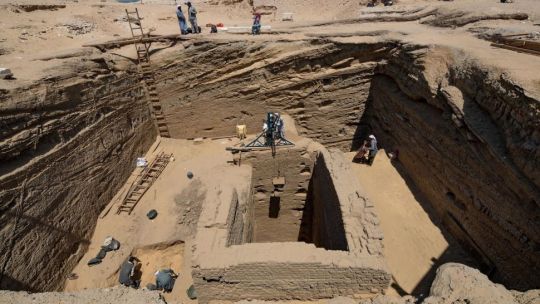
Archaeologists in Egypt have discovered a 2,600-year-old tomb belonging to a man of high status: a "commander of foreign mercenaries" named "Wahibre-mery-Neith."
The tomb's embalming cache, found in 2021, includes more than 370 pottery storage jars containing materials used in the commander's mummification, making it the "largest embalming cache ever found in Egypt," a team of Egyptian and Czech researchers said in a statement. The tomb is buried at Abusir (also spelled Abū Ṣīr), a few miles south of the giant necropolis at Saqqara.
Grave robbers stole Wahibre-mery-Neith's mummy in antiquity, but archaeologists located remains of his sarcophagus that have hieroglyphs inscribed on them. The glyphs give his identity and quote part of chapter 72 of the Book of the Dead that describes "the resurrection of the deceased and his departure to the afterlife," according to the statement. Read more.
358 notes
·
View notes
Text
Sha’re’s funeral litany
So I was curious about a scene in “Forever in a Day,” when Daniel Jackson is speaking a funeral litany over the grave of Sha’re, because it’s an extended depiction of an alien language--which is surprisingly rare in Stargate SG-1, especially in the early seasons, and especially for a language that is not Goa’uld or Ancient. The former is totally invented, and the latter is just randomly-mangled Latin words, but the language of Abydos, where Sha’re is from and where she is being buried, is supposedly closely related to ancient Egyptian.
The litany is below; I have done my very best to transcribe the Abydonian portions using IPA.
I speak for Sha’re, who can no longer speak for herself.
/nəˈdiduweɪ ˈguɾaχ nəˈjirjuweɪ ˈmusoreɪja/
I have spoken no lies, nor acted with deceit.
/ˈjanaχ saˈpuwu ˈʃureɪ jɛˈseɪdeɪ ˈnuteɪ ˈjirjunav sɛˈʃɛɹunu/
I was once possessed by a demon who did these things against my will.
/ˈjuwa jɛˈseɪdeɪ ˈbrɐjiv maˈnuten nəˈneɪweɪ ˈjasfeɪ/
The demon is gone, and now I am without sin.
/diˈja piˈrateɪ aˈsaku ˈjeɪru/
Grant me a place in your blessed dwelling.
If my heart weighs more than a feather my soul still contains sin. If not, may my soul join the god.
By the trial of the Great Scales, thy heart is light. Thy soul has been found true.
Two things immediately stand out in this scene: one, of course, is the trial of the feather, which is taken from the Book of the Dead. The other is a quote from the Solar Litany, also from the Book of the Dead:
Homage to you, O ye gods of the Dekans in Anu, and to you, O ye Hememet-spirits in Kher Aha, and to thee, O Unti, who art the most glorious of all the gods who are hidden in Anu, O grant thou unto me a path whereover I may pass in peace, for I am just and true; I have not spoken falsehood wittingly, nor have I done aught with deceit.
Budge transliterates the bolded portion thus: nuk āq ȧn t'eṭ-ȧ ḳer em reχ-ȧ ȧn ȧri-ȧ sep sen. I don’t know how that would be transcribed by modern Egyptologists, because Budge uses <ȧ> where modern transcriptions sometimes use <j> and sometimes use <y>; ditto <χ> for Budge vs. modern <ḫ> and <ẖ>. All I can say is, it’s pretty clearly not the basis for any of the Abydonian phrases.
It’s not Ancient Egyptian, but it’s actually a pretty good approximation of the sounds of ancient Egyptian, at least in its Egyptological pronunciation. Accounting for Michael Shanks’/Daniel Jackson’s North American accent, where [r] is rendered [ɹ], and the closest approximations of [e] are going to be [eɪ] or [ɛ], depending on if the syllable is open or closed, I might transcribe the underlying theoretical Abydonian as
nediduwe guraχ nejirjuwe musoreja
janaχ sapuwu ʃure jesede nuter jirjunaf seʃerunu
juwa jesede brojif manuten nenewe jasfe
dija pirate asaku jeru
#stargate sg-1#conlanging#word boundaries are total conjecture obvs#would be super interested in seeing the original script given to shanks#i think only a handful have been published#and 'forever in a day' is not one
38 notes
·
View notes